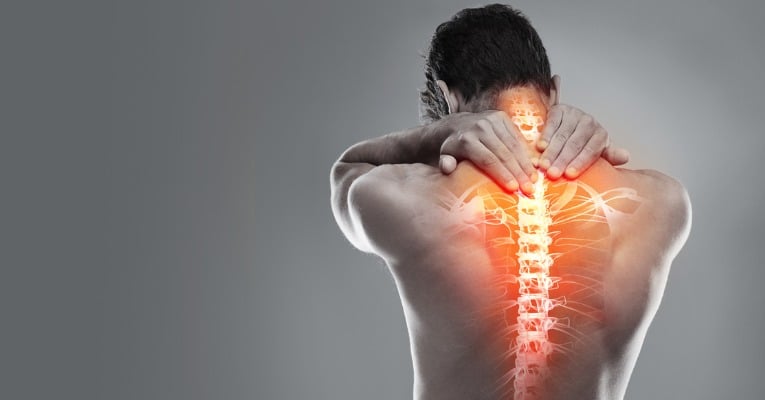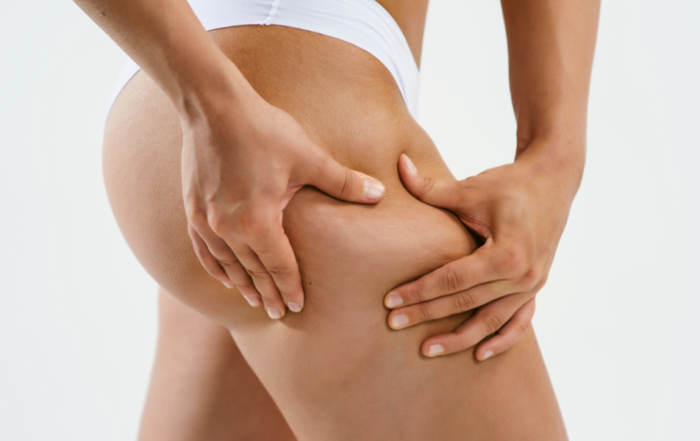
1/ Définition
Which region is involved?
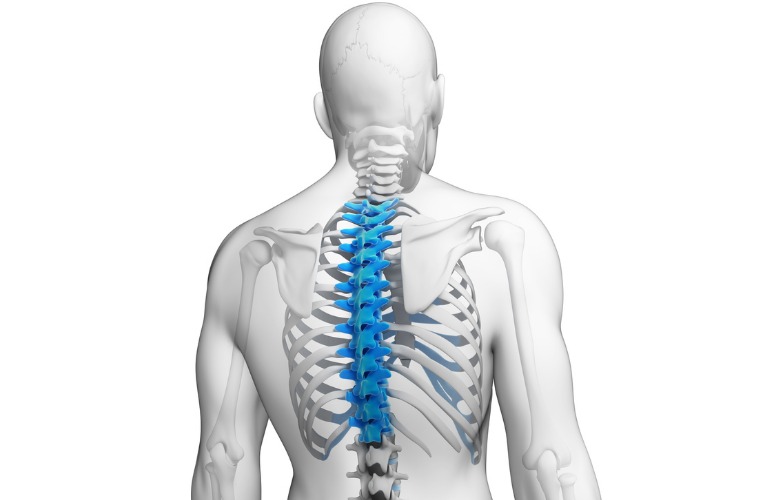
Dorsalgia concerns the thoracic spine, i.e. the upper part of the spinal column.
This portion of the spine is curved forward and forms what is called ” kyphosis “.
It is composed of 12 vertebrae superimposed on each other. Each dorsal vertebra is articulated with two ribs (right and left) at the level of the costo-vertebral joints.
The inter scapular region refers to the entire dorsal surface that separates the shoulder blades (also called the scapula “). This region includes the posterior arch of the ribs as well as many muscles. Among them, the trapezewhich we often hear about because of its “contractures or muscular tensions.
What is “back pain”?
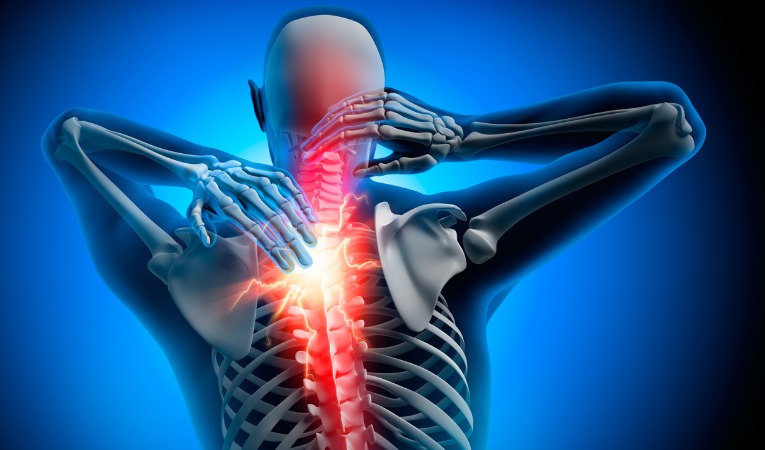
Back pain is a general term for all pain in the thoracic spine.
These are often located between the shoulder blades (scapula), we speak then of inter scapular pain.
Unfortunately, back pain is becoming more and more common these days.
What are the symptoms?
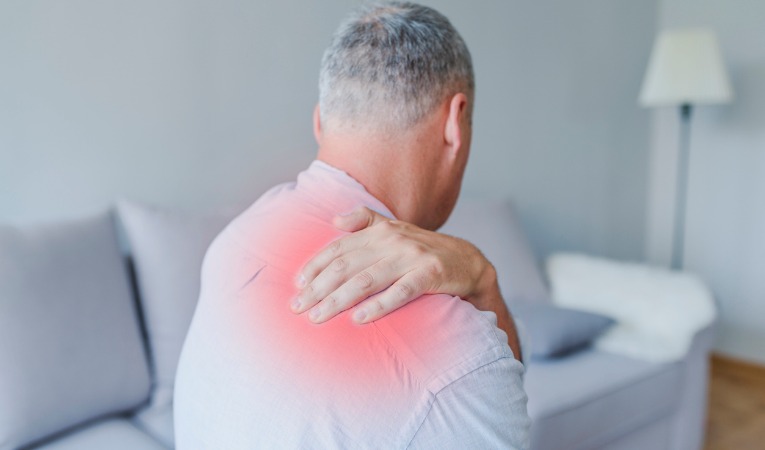
Symptoms related to back pain are:
- burning sensation or “spike in the back
- sensations of tingling
- sensations of cramps
They are often related to with fatigue. They generally increase at the end of the day when the back muscles are overworked.
Back pain can also be related to a deep suffering of the spine (fascia, ligament, joint, etc.). It is then felt in a way local or irradiated.
This chapter deals only with back pain of mechanical and muscular origin.
Back pain of visceral, pulmonary or cardiac origin or related to rheumatic diseases (polyarthritis, etc.) requires specific medical care.
When in doubt, consult a doctor to obtain a precise diagnosis of the origin of your pain.
2/ Explications
How does pain set in?
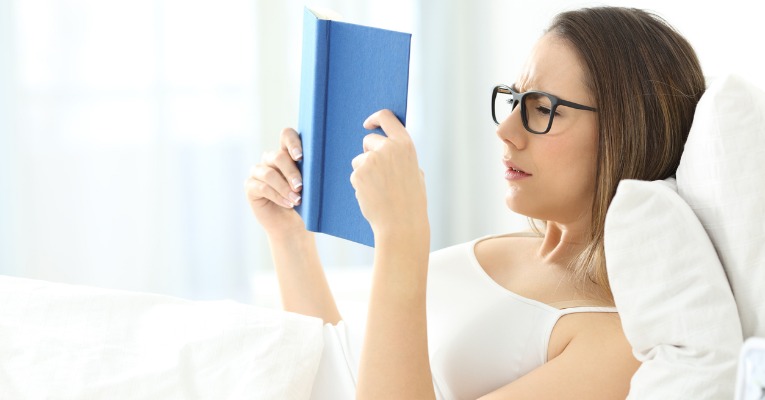
Posture is often blamed for back pain. This explains why the pain sets in gradually and increases during the day.
They can sometimes be felt for several days and then disappear as they appeared… Indeed, the body is constantly adapting to allow you to carry out your daily activities.
On the other hand, if the discomfort is long-lasting, a global treatment is necessary .
This must include:
- an adaptation of your work position (manual work, repetitive tasks or positioning in front of the computer for example)
- the implementation of an adapted rehabilitation program (physiotherapy follow-up + daily therapeutic exercises).
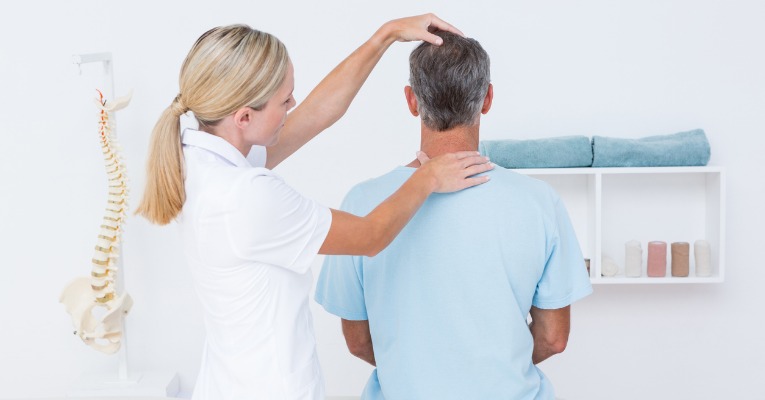
What are the possible causes of back pain?
1/ Back pain of cervical origin.
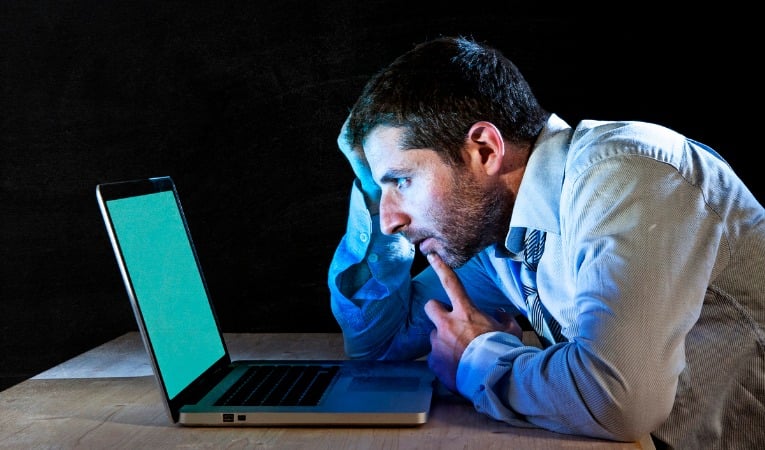
When the head is carried forward, the cervical muscles tire and show signs of overuse.
Since some of them extend from the cervical spine to the upper back (trapezius, splenius, scapula elevator muscles, etc.), back pain can occur.
Also, the deep muscles of the spine suffer and can cause remote pain. We speak then radiation or or projected pain. These usually extend to the shoulders or the inter scapular region. These back pains can be of thoracic origin or cervical origin…
It is important to consult a health care professional for an accurate diagnosis.
2/ Back pain of thoracic origin.
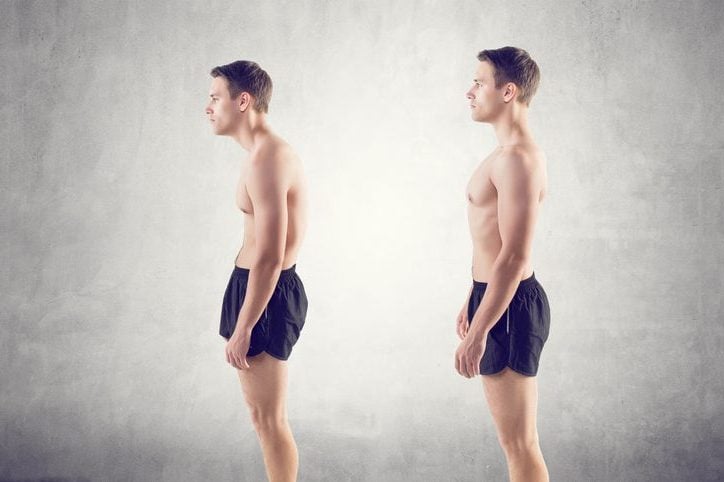
When the thoracic kyphosis (the curling of the upper back) increases throughout the day, muscles, ligaments and other posterior spinal structures stretch and eventually suffer.
If this is temporary, correcting the posture will quickly eliminate the pain. Otherwise, an imbalance of strength and flexibility may develop. The muscles at the front of the body, especially the pectorals, become stiff and keep the shoulders and back rolled up. On the other hand, the inter scapular muscles located behind, between the shoulder blades, remain stretched and weaken.
The continuous stretching of the back structures can make the pain chronic and install a long-lasting back pain.
3/ Back pain related to trauma.
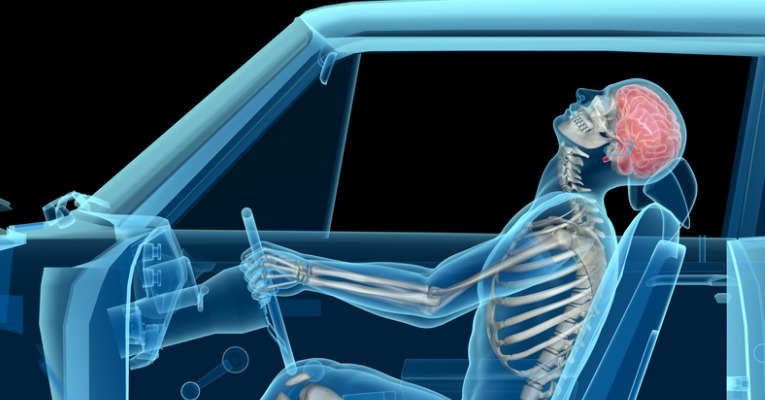
When the spine or muscles are directly impacted by a shock, pain sets in and prevents any movement.
After consolidation, it is necessary to recover the flexibility of the back in order to avoid cervical or lumbar (lower back) compensations. It is also essential to strengthen the spinal and scapula fixing muscles to keep the back straight and avoid possible recurrences.
Rehabilitation is therefore highly recommended.
What is Scheueurmann’s disease?
Scheuermann’s disease is a special case. It causes a progressive increase in thoracic kyphosis. We speak then d’hypercyphosis. This stiffening of the spine also causes inter scapular pain.
It is actually a deformation of the thoracic vertebrae that makes them more “crushed” in the front than in the back. This occurs during growth.
Special case of scoliosis and scoliotic attitude
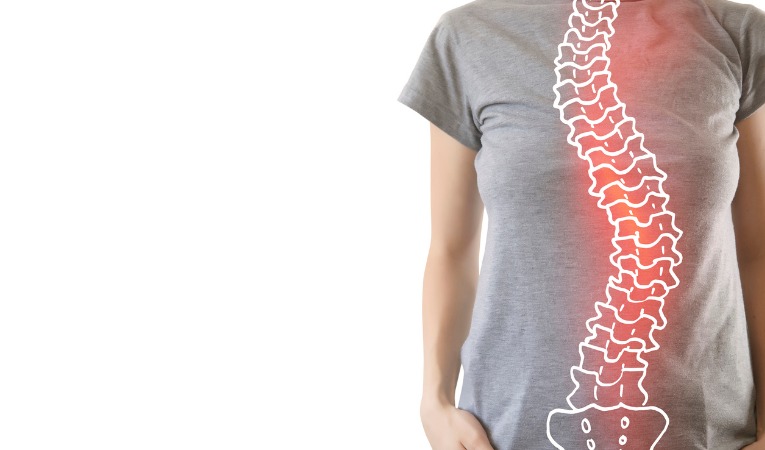
Inter scapular pain is regularly observed in the case of scoliosis or scoliotic attitude.
Scoliosis is a deformation of the spine (lumbar and thoracic) in the 3 planes of the 3 planes of space. It is accentuated during growth and is observed in particular by the increase in inclination curves and of rotation of the column. The deformation of the ribs is more noticeable on one side of the body than on the other and manifests itself as a bump called gibbosity.
Concerning the scoliotic attitudePostural habits can induce an inflection of the spine and be mistaken for scoliosis. In reality, she has no actual bony deformity of the spine.
In these two cases, postural asymmetry would explain the establishment of muscle tension and pain.
Why have an X-ray or MRI?
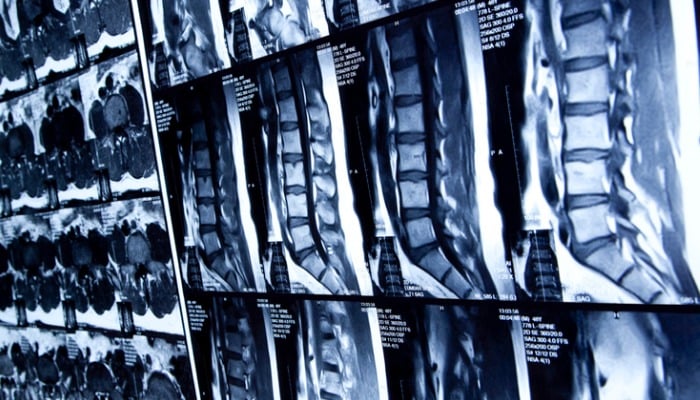
The radiography shows the condition of the cartilage, intervertebral discs and vertebrae. It allows to know if there is, or not, a deformation of the vertebrae (scoliosis, scheueurman’s disease, etc.), arthrosis, a pinched disc
pinched disc
or a bone fracture.
THE MRI
and
the scanner
are used to observe the condition of ligaments, intervertebral discs, and to diagnose a herniated disc. The thoracic hernias are rare and not very disabling.
On the other hand, an cervical MRI is sometimes requested. In fact, the suffering of a cervical intervertebral disc can give pain radiating towards the shoulder blades.
Intra-spongy thoracic hernias
At the thoracic level, hernias are rarely excluded towards the back of the spine as can be observed at the lumbar level.
However, it is possible that the hernia enters and lodges in the body of the vertebra. We speak then of intraspongiosa hernia.
These are most often found in Scheueurmann’s disease.
3/ Durée du traitement
How long will my recovery take?

The back pain evolves favorably within 2 to 8 weeks when the precise diagnosis is made and the appropriate treatment is put in place.
The speed of recovery will then depend on the extent of the pain and your involvement in the rehabilitation.
Most often, back pain sets in when the overall posture of the body deteriorates. Correcting your posture through regular practice of specific rehabilitation exercises can quickly improve the condition of your back.
For these results to last, you must also improve the ergonomics of your workstation and your daily movements.
4/ Que faire ?
Should I change my pillow?
If you are in pain when you wake up, your position during the night may not be right. What type of pillow do you use?
Pillows that are too thick should be avoided because they place your cervical spine in excessive flexion, thus maintaining prolonged tension on the posterior muscles and ligaments.
Subsequently, the cervical vertebrae may project pain between the shoulder blades.
Our advice: If you have trouble finding a pillow that fits your cervical curvature, opt for an ergonomic pillow.
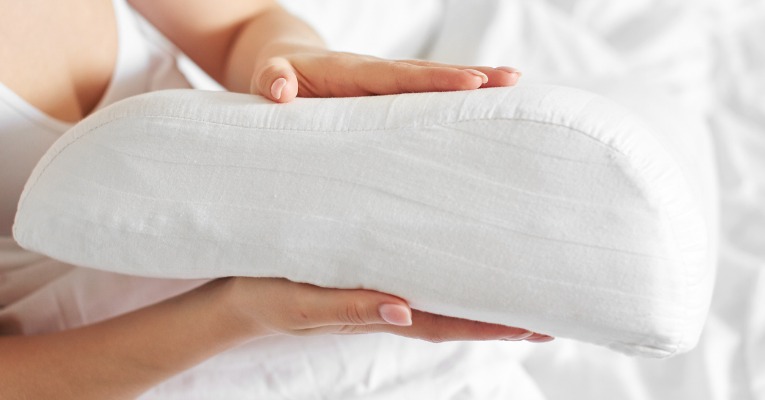
The importance of the position at work
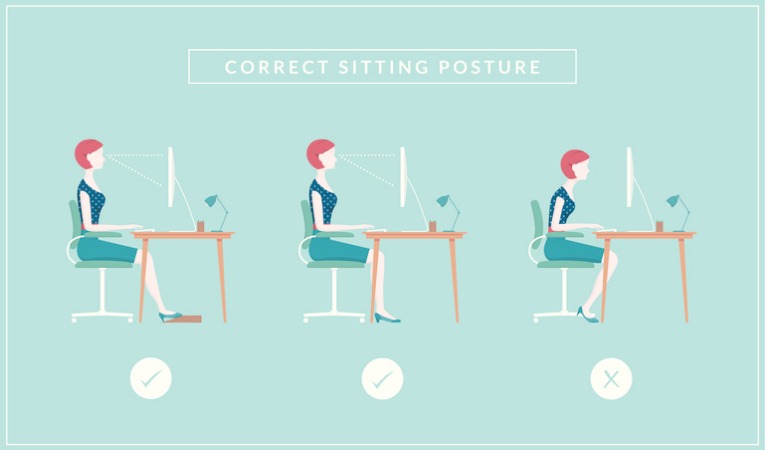
The position you adopt the longest during the day has a considerable impact on your muscular tensions and your pains… A large part of the population now works in a sitting position and sees its posture deteriorate during the day.
Here are 3 basic tips to follow:
- One of the first things to do is to adjust the height of your seat and computer screen so that your elbows are resting on the desk and your head is upright.
- Next, position a cushion, soft ball or clothing behind your upper back. It will then act as an “exteroceptive reminder” to keep your back straight and your neck erect for longer periods of time during your day.
- Finally, remember that the back appreciates movement. He doesn’t like to stay in place for too long in any position. Take a break every hour or two, and move your spine backwards for relief. One or two minutes of stretching is enough.
Changing bad habits on a daily basis
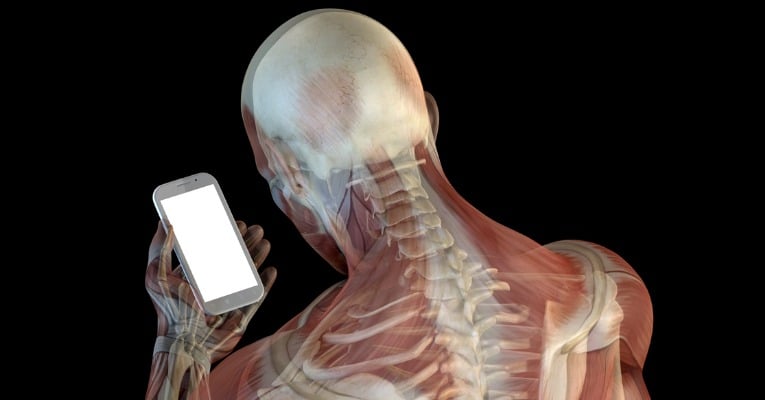
Some daily habits really do tend to irritate the back without us even realizing it!
Numerous studies show that the position of the neck and spine is poor when using a smartphone. It tends to position our cervicals in flexion in a prolonged way which would explain in part the cervical and dorsal tensions…
Slouching on the couch (TV, smartphone, reading etc) would have the same effect for the same reasons. Especially when it is adopted directly after a sports, weight training or rehabilitation session!
Remember that the back is designed to support all positions. He just doesn’t like to stay static for too long.
It is therefore strongly advised to mobilize your back regularly and to favour an upright posture as much as possible.
Interest of muscle strengthening exercises including the shoulder
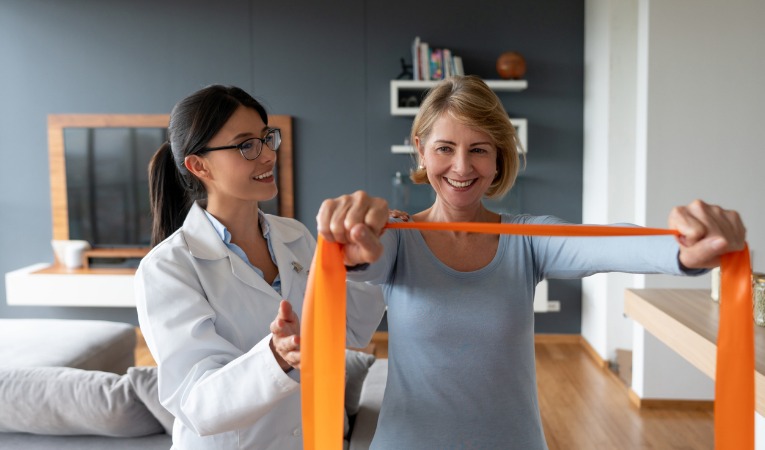
The upper back is intimately linked to the cervicals and shoulders. The trapezius, dorsal and paravertebral muscles are directly linked to these different regions of the body.
Therefore, strengthening your shoulders and neck intelligently actively contributes to the well-being of your backbone. The forces must be balanced between the anterior muscles (e.g. pectorals) and the posterior muscles (dorsal, lower trapezius, etc.).
To do this, practice as many strengthening exercises for the front as for the back of the body. This notion of balance is very important for those who want to enjoy a healthy body.
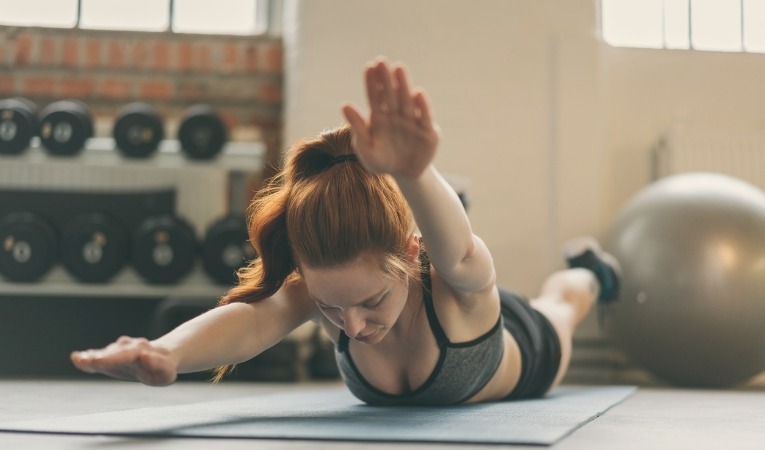
Influence of stress on chest pain
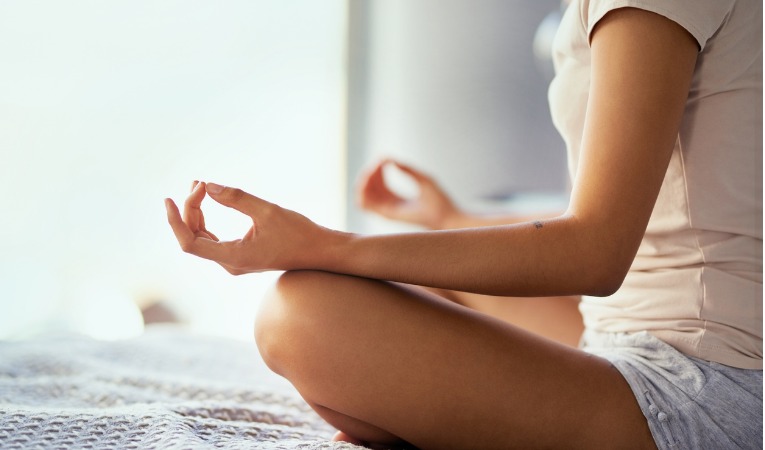
“All this pressure is weighing on my shoulders”, “I’ve got a lot on my plate” etc.
These expressions express the fact that stress is often a source of tension on the back or trapezius.
Some studies now validate the fact that fatigue, depression or low self-esteem amplify these sensations and increase the pain felt.
Nowadays, there are many tools to relieve yourself of all this stress. Sports, massages, hypnosis, relaxation, meditation, alpha waves are some of the many ways to help you relax and unwind.
Don’t wait to start rehab!
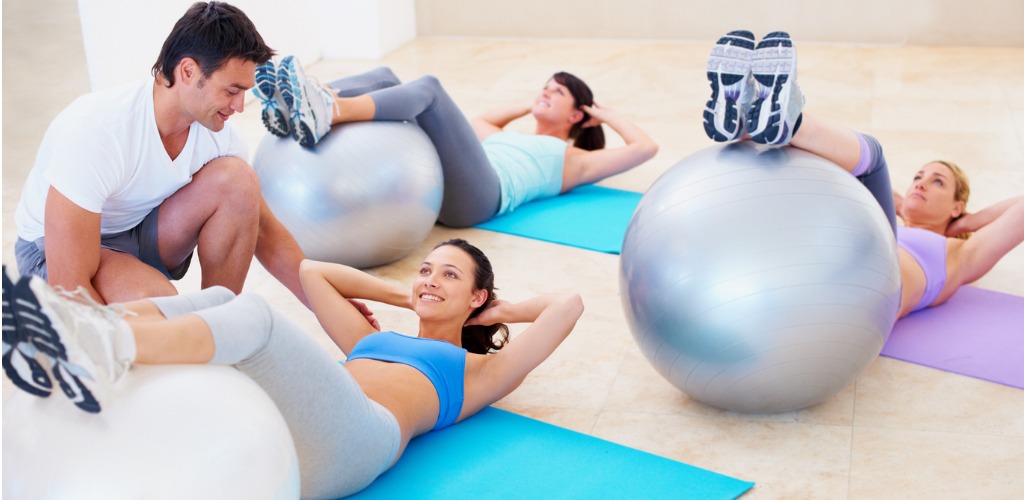
If you feel a burning or diffuse pain between your shoulder blades,consult a physiotherapist quickly in order to make an accurate diagnosis and implement the most appropriate treatment for back pain.
The first goal of rehabilitation is to improve your posture. This includes:
- of stretching exercises
- specific reinforcement
- and a proprioceptive work (awareness of the dorsal curvature, knowledge of the back, etc.)
During the sessions, your physiotherapist will give you advice on how to quickly adapt your workspace and relieve your pain.
The exercises proposed in rehabilitation will also integrate the cervical and lumbar muscles in order to treat the spine as a whole.
Finally, these movements can be integrated into your warm-ups during sports sessions in order to maintain the results in the long term.


Articles liés
1/ Définition
Which region is involved?

Dorsalgia concerns the thoracic spine, i.e. the upper part of the spinal column.
This portion of the spine is curved forward and forms what is called ” kyphosis “.
It is composed of 12 vertebrae superimposed on each other. Each dorsal vertebra is articulated with two ribs (right and left) at the level of the costo-vertebral joints.
The inter scapular region refers to the entire dorsal surface that separates the shoulder blades (also called the scapula “). This region includes the posterior arch of the ribs as well as many muscles. Among them, the trapezewhich we often hear about because of its “contractures or muscular tensions.
What is “back pain”?

Back pain is a general term for all pain in the thoracic spine.
These are often located between the shoulder blades (scapula), we speak then of inter scapular pain.
Unfortunately, back pain is becoming more and more common these days.
What are the symptoms?

Symptoms related to back pain are:
- burning sensation or “spike in the back
- sensations of tingling
- sensations of cramps
They are often related to with fatigue. They generally increase at the end of the day when the back muscles are overworked.
Back pain can also be related to a deep suffering of the spine (fascia, ligament, joint, etc.). It is then felt in a way local or irradiated.
This chapter deals only with back pain of mechanical and muscular origin.
Back pain of visceral, pulmonary or cardiac origin or related to rheumatic diseases (polyarthritis, etc.) requires specific medical care.
When in doubt, consult a doctor to obtain a precise diagnosis of the origin of your pain.
2/ Explications
How does pain set in?

Posture is often blamed for back pain. This explains why the pain sets in gradually and increases during the day.
They can sometimes be felt for several days and then disappear as they appeared… Indeed, the body is constantly adapting to allow you to carry out your daily activities.
On the other hand, if the discomfort is long-lasting, a global treatment is necessary .
This must include:
- an adaptation of your work position (manual work, repetitive tasks or positioning in front of the computer for example)
- the implementation of an adapted rehabilitation program (physiotherapy follow-up + daily therapeutic exercises).

What are the possible causes of back pain?
1/ Back pain of cervical origin.

When the head is carried forward, the cervical muscles tire and show signs of overuse.
Since some of them extend from the cervical spine to the upper back (trapezius, splenius, scapula elevator muscles, etc.), back pain can occur.
Also, the deep muscles of the spine suffer and can cause remote pain. We speak then radiation or or projected pain. These usually extend to the shoulders or the inter scapular region. These back pains can be of thoracic origin or cervical origin…
It is important to consult a health care professional for an accurate diagnosis.
2/ Back pain of thoracic origin.

When the thoracic kyphosis (the curling of the upper back) increases throughout the day, muscles, ligaments and other posterior spinal structures stretch and eventually suffer.
If this is temporary, correcting the posture will quickly eliminate the pain. Otherwise, an imbalance of strength and flexibility may develop. The muscles at the front of the body, especially the pectorals, become stiff and keep the shoulders and back rolled up. On the other hand, the inter scapular muscles located behind, between the shoulder blades, remain stretched and weaken.
The continuous stretching of the back structures can make the pain chronic and install a long-lasting back pain.
3/ Back pain related to trauma.

When the spine or muscles are directly impacted by a shock, pain sets in and prevents any movement.
After consolidation, it is necessary to recover the flexibility of the back in order to avoid cervical or lumbar (lower back) compensations. It is also essential to strengthen the spinal and scapula fixing muscles to keep the back straight and avoid possible recurrences.
Rehabilitation is therefore highly recommended.
What is Scheueurmann’s disease?
Scheuermann’s disease is a special case. It causes a progressive increase in thoracic kyphosis. We speak then d’hypercyphosis. This stiffening of the spine also causes inter scapular pain.
It is actually a deformation of the thoracic vertebrae that makes them more “crushed” in the front than in the back. This occurs during growth.
Special case of scoliosis and scoliotic attitude

Inter scapular pain is regularly observed in the case of scoliosis or scoliotic attitude.
Scoliosis is a deformation of the spine (lumbar and thoracic) in the 3 planes of the 3 planes of space. It is accentuated during growth and is observed in particular by the increase in inclination curves and of rotation of the column. The deformation of the ribs is more noticeable on one side of the body than on the other and manifests itself as a bump called gibbosity.
Concerning the scoliotic attitudePostural habits can induce an inflection of the spine and be mistaken for scoliosis. In reality, she has no actual bony deformity of the spine.
In these two cases, postural asymmetry would explain the establishment of muscle tension and pain.
Why have an X-ray or MRI?

The radiography shows the condition of the cartilage, intervertebral discs and vertebrae. It allows to know if there is, or not, a deformation of the vertebrae (scoliosis, scheueurman’s disease, etc.), arthrosis, a pinched disc
pinched disc
or a bone fracture.
THE MRI
and
the scanner
are used to observe the condition of ligaments, intervertebral discs, and to diagnose a herniated disc. The thoracic hernias are rare and not very disabling.
On the other hand, an cervical MRI is sometimes requested. In fact, the suffering of a cervical intervertebral disc can give pain radiating towards the shoulder blades.
Intra-spongy thoracic hernias
At the thoracic level, hernias are rarely excluded towards the back of the spine as can be observed at the lumbar level.
However, it is possible that the hernia enters and lodges in the body of the vertebra. We speak then of intraspongiosa hernia.
These are most often found in Scheueurmann’s disease.
3/ Durée du traitement
How long will my recovery take?

The back pain evolves favorably within 2 to 8 weeks when the precise diagnosis is made and the appropriate treatment is put in place.
The speed of recovery will then depend on the extent of the pain and your involvement in the rehabilitation.
Most often, back pain sets in when the overall posture of the body deteriorates. Correcting your posture through regular practice of specific rehabilitation exercises can quickly improve the condition of your back.
For these results to last, you must also improve the ergonomics of your workstation and your daily movements.
4/ Que faire ?
Should I change my pillow?
If you are in pain when you wake up, your position during the night may not be right. What type of pillow do you use?
Pillows that are too thick should be avoided because they place your cervical spine in excessive flexion, thus maintaining prolonged tension on the posterior muscles and ligaments.
Subsequently, the cervical vertebrae may project pain between the shoulder blades.
Our advice: If you have trouble finding a pillow that fits your cervical curvature, opt for an ergonomic pillow.

The importance of the position at work

The position you adopt the longest during the day has a considerable impact on your muscular tensions and your pains… A large part of the population now works in a sitting position and sees its posture deteriorate during the day.
Here are 3 basic tips to follow:
- One of the first things to do is to adjust the height of your seat and computer screen so that your elbows are resting on the desk and your head is upright.
- Next, position a cushion, soft ball or clothing behind your upper back. It will then act as an “exteroceptive reminder” to keep your back straight and your neck erect for longer periods of time during your day.
- Finally, remember that the back appreciates movement. He doesn’t like to stay in place for too long in any position. Take a break every hour or two, and move your spine backwards for relief. One or two minutes of stretching is enough.
Changing bad habits on a daily basis

Some daily habits really do tend to irritate the back without us even realizing it!
Numerous studies show that the position of the neck and spine is poor when using a smartphone. It tends to position our cervicals in flexion in a prolonged way which would explain in part the cervical and dorsal tensions…
Slouching on the couch (TV, smartphone, reading etc) would have the same effect for the same reasons. Especially when it is adopted directly after a sports, weight training or rehabilitation session!
Remember that the back is designed to support all positions. He just doesn’t like to stay static for too long.
It is therefore strongly advised to mobilize your back regularly and to favour an upright posture as much as possible.
Interest of muscle strengthening exercises including the shoulder

The upper back is intimately linked to the cervicals and shoulders. The trapezius, dorsal and paravertebral muscles are directly linked to these different regions of the body.
Therefore, strengthening your shoulders and neck intelligently actively contributes to the well-being of your backbone. The forces must be balanced between the anterior muscles (e.g. pectorals) and the posterior muscles (dorsal, lower trapezius, etc.).
To do this, practice as many strengthening exercises for the front as for the back of the body. This notion of balance is very important for those who want to enjoy a healthy body.

Influence of stress on chest pain

“All this pressure is weighing on my shoulders”, “I’ve got a lot on my plate” etc.
These expressions express the fact that stress is often a source of tension on the back or trapezius.
Some studies now validate the fact that fatigue, depression or low self-esteem amplify these sensations and increase the pain felt.
Nowadays, there are many tools to relieve yourself of all this stress. Sports, massages, hypnosis, relaxation, meditation, alpha waves are some of the many ways to help you relax and unwind.
Don’t wait to start rehab!

If you feel a burning or diffuse pain between your shoulder blades,consult a physiotherapist quickly in order to make an accurate diagnosis and implement the most appropriate treatment for back pain.
The first goal of rehabilitation is to improve your posture. This includes:
- of stretching exercises
- specific reinforcement
- and a proprioceptive work (awareness of the dorsal curvature, knowledge of the back, etc.)
During the sessions, your physiotherapist will give you advice on how to quickly adapt your workspace and relieve your pain.
The exercises proposed in rehabilitation will also integrate the cervical and lumbar muscles in order to treat the spine as a whole.
Finally, these movements can be integrated into your warm-ups during sports sessions in order to maintain the results in the long term.

